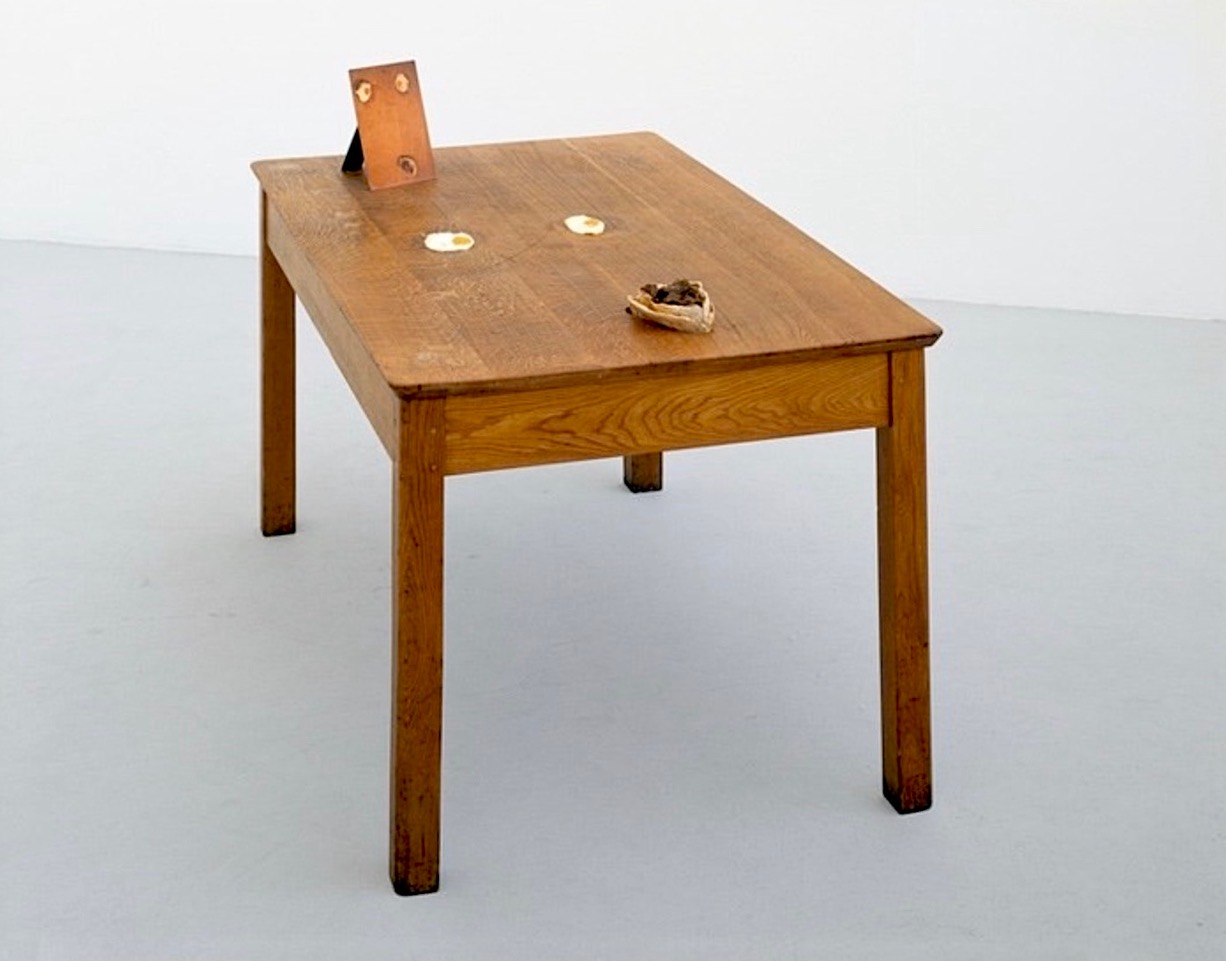Sarah Lucas’s solo show has just opened at Tate Britain. Lucas has always been the baddest of the bad YBA girls. Unlike Emin, who was rather partial to attending private views in her Vivienne Westwood best, Sarah Lucas, who grew up on an Islington council estate, preferred, with her Doc Martins, lank hair, fags and pints, to be seen as one of the lads.
It’s hard to believe that this mauvaise fille has now hit 60. Not known for her subtlety or nuisance, this new Tate Britain exhibition reveals something of a maturing aesthetic. So, I thought it would be interesting to revisit one of her earlier works from 1992, Two Fried Eggs and a Kebab, which, surprisingly, is not included in this show.
The 1990s was the era of Trainspotting. The novel by the Scottish writer, Irvine Walsh, described by The Herald as: “… a loosely knotted string of jagged, dislocated tales that lay bare the hearts of darkness of the junkies, wide-boys and psychos who ride in the down escalator of opportunity…”. The sensibility of the novel, as well as that of Lucas’s work during this period, was iconoclastic, irreverent and bawdy. After the downfall of Thatcher, the anarchy and irreverence avowed by the Sex Pistols became the cultural mood music of the time. Being ironic was the new black. Both artist and novelist were telling the world to fuck off. Postmodernism had hit the streets.
Attending the uber-cool art school of the 80s, Goldsmiths College, where she became a multi-media artist, Sarah Lucas was included in Damien Hirst’s seminal exhibition Freeze, going on to have a solo exhibition at City Racing and then opening The Shop in Waterloo with Tracey Emin. (I remember a visit I made for Time Out when Tracey was dancing around after a night out in her knickers). In 1997, Sarah Lucas was included in the Royal Academy’s seminal exhibition, Sensation.
Two Fried Eggs and a Kebab quickly became notorious. It both delighted and enraged gallerygoers in equal measure. Like Duchamps’ urinal, it was barely an artwork at all, just a worn table on which Lucas placed two newly fried eggs (sunny side up) alongside a pocket of pitta bread stuffed with shredded kebab. But this tongue-in- cheek mimicking of the breasts and genitalia of a woman was too much for some. There were those who argued it was a feminist critique that challenged assumptions around gender, sexuality, eroticism and power. While others saw it as simply sticking a finger up to the establishment.
Women have, all too often, had an obsessive relationship with food. Female desire and food have often been intertwined. Meret Oppenheim’s white high heels, bound and trussed on a silver platter and decorated with frilly white paper noisettes like lamb chops, suggest the fetishisation of food. From Freudian theory – (“no one who has seen a baby sinking back satiated from the breast… can escape the reflection that this… serves as the prototype of the expression of sexual satisfaction in later life”) – to adverts of women performing fellatio on Cadbury’s chocolate flakes, food has been recognised as not only a source of erotic pleasure but, also, of female shame and self-destruction. The world is full of young women with eating disorders, with bulimia and anorexia nervosa. While the media constantly tells them they should be desirably skinny, food has become associated with pleasure, danger and the erotic. Female fat is seen as a sin. Whilst adverts equate orgasm and sexual satisfaction with the solitary, guilty pleasure of eating a tub of Häagen Dazs ice cream. It may be naughty, but it’s nice.
Women are all too well aware of these connections between food and sex. Sarah Lucas conflates these female secret vices with the way that, for many men, the feminine body is simply there to be consumed. Two fried eggs and a kebab can be eaten at any time, particularly after a drunk night out, without much thought and with few consequences. They are nothing special, there for instant gratification, to satiate hunger or sexual desire. By reducing the female body to three elements that can easily be eaten or thrown away, Sarah Lucas is emphasising not only female abjection but invisibility. When this work was made in the 90s, it’s more than likely that what she wanted to do was to épater le bourgeois. In fact, what she made was a work that critiqued the sexual commodification of women within late 20th-century society.
Sarah Lucas: Happy Gas, Tate Britain 28 September 2023 – 14 January 2023
Visit Here
Sue Hubbard is an award-winning poet, novelist and freelance art critic.
Her most recent novel, Flatlands, is available here
and her new poetry collection, God’s Little Artist, poems on the life of Gwen John, here

